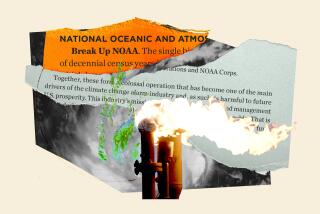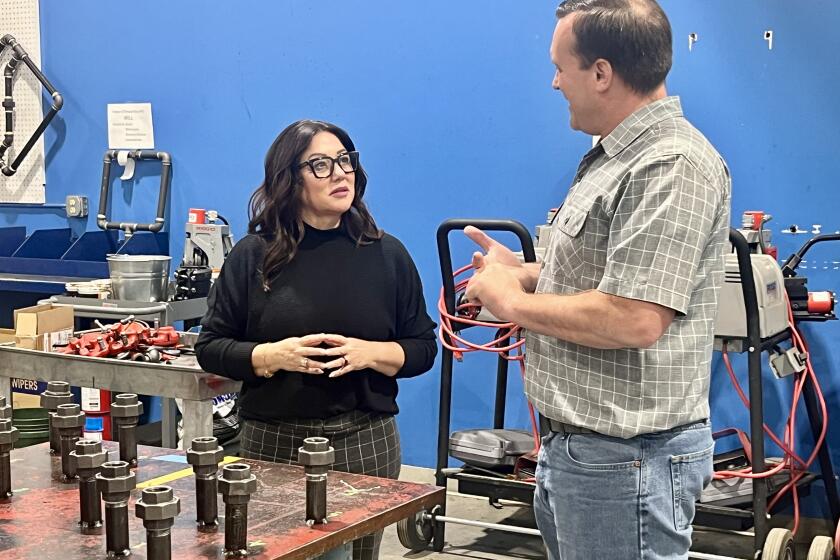Unity and Reform Under 1 Petri Dish
WASHINGTON â Physicist John H. Gibbons would seem to have it made.
He is the White House science and technology policy adviser in an Administration bent on the kind of activist, interventionist science and technology initiatives that havenât been seen in this town for more than 30 years.
The problem is that both by talent and temperament, Gibbons is more methodical consensus builder than bureaucratic âintrapreneur.â
This is a painful position for someone who must soon make choices about whether science and technology will play a leadership role in this Administrationâs economic agenda or merely a supporting one. Gibbons is clearly not yet comfortable about those choices.
âA compelling argument could be made that my primary role is to illuminate the issues that matter and to build a network to support them,â he says from his spacious digs in the old Executive Office Building. âBeing a team player at the White House is whatâs important now. . . . I see our efforts here being like âbrush blockingâ in football--we convene, cajole and catalyze actions that can go through the agencies and departments.â
Gibbons has in fact won a solid reputation on the Hill as an âhonest broker,â thanks to his (relatively) nonpartisan directorship of Congressâ Office of Technology Assessment. His relationship with Vice President Al Gore is excellent and--for now--he enjoys a full partnership with Bob Rubinâs powerful National Economic Council.
Of course, in a town where the football metaphors associated with political effectiveness are âfull-body blockingâ and âcutting people off at the knees,â brush-blocking tactics are regarded as more of a nuisance than an influence.
But make no mistake: Gibbons does have a charter to fundamentally reorganize the huge federal science and technology Establishment. Whatâs more, he wants to reorganize it around the Clinton Administrationâs belief that government must play a much more explicit role in competitiveness and environmental issues.
âThe future is seen through a glass darkly,â Gibbons says, âbut there are several themes that we are pushing. . . . We clearly want to create a new sense of partnership both inside and outside the government.â
He is pushing the governmentâs sprawling, multibillion-dollar array of science and technology agencies to work together more. He wants to see interagency research alliances between Defense and Commerce, Education and Labor, Commerce and Health and Human Services.
Some of this reflects a desire to consolidate resources, Gibbons says, but much of the effort embodies an awareness that multi-agency alliances offer the best opportunity for stimulating innovation.
In addition to the difficulties in coordinating interdepartmental initiatives, Gibbons concedes, thereâs the challenge of getting the budget to fund coalitions, not just individual agencies.
âI would hope it would be evident in the way the budget is drawn,â he says, that âwe do want to push the envelope of federal investment. Itâs too late for the 1994 budget, but thatâs what I would hope would evolve for the 1995 budget.â
Heâs also prepared to re-examine scientific institutions that the science and technology Establishment have come to take for granted. For example, he is not committed to the present complement of National Labs.
âNo question about it,â he acknowledges. âI have little doubt that some of them might be better off closed.â
Similarly, donât expect Gibbonsâ office to advise âBig Scienceâ projects such as the superconducting super collider or the space station without international support up front.
But the most controversial aspect of Gibbonsâ brush blocking will no doubt be his recommendations for the governmentâs active involvement and investment in âsector-specificâ areas, such as automobile technology.
âThere are clear public benefits to assisting the auto industry for clean air,â he says. âItâs more cost-effective for us to become involved early in this area.â
However, Gibbons acknowledges that âitâs easy to go awry with these things,â even if the dollar amounts are not large.
He freely concedes, in fact, that the Administration has invested significantly more time and thought in discussing how best to design government participation in the private sector than in measuring the effectiveness of such participation. In other words, the technocrats are focusing more energy on the likely inputs than on determining the desirable results.
âItâs difficult to figure out what metrics would be most appropriate to measure our successes or failures,â Gibbons allows. âWe think that the private sector is willing to partner with us is a sign that the marketplace likes these initiatives.â
Ultimately, of course, Gibbonsâ success as science and technology policy adviser will be determined not by the budgets he brokers or the agencies he coordinates, but by their impact on the quality of the nationâs innovation initiatives.
During the first 100 days, Gibbonsâ office has taken important first steps in reorganizing the governmentâs technology missions and institutions. In the next 100 days, the office must have the courage to tell people how it will measure the success and failure of its ideas.
More to Read
Get the L.A. Times Politics newsletter
Deeply reported insights into legislation, politics and policy from Sacramento, Washington and beyond. In your inbox three times per week.
You may occasionally receive promotional content from the Los Angeles Times.










